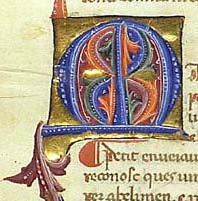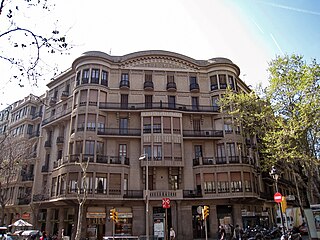 W
WCatalan literature is the name conventionally used to refer to literature written in the Catalan language. The focus of this article is not just the literature of Catalonia, but literature written in Catalan from anywhere, so that it includes writers from the Valencian Community, Balearic Islands and other territories where Catalan or its variants are spoken.
 W
WThe Cançoner Gil is an Occitan chansonnier produced in Catalonia in the middle of the 14th century. In the systematic nomenclature of Occitanists, it is typically named MS Sg, but as Z in the reassignment of letter names by François Zufferey. It is numbered MS 146 in the Biblioteca de Catalunya in Barcelona where it now resides.
 W
WA maldit was a genre of Catalan and Occitan literature practised by the later troubadours. It was a song complaining about a lady's behaviour and character. A related genre, the comiat, was a song renouncing a lover. The maldit and the comiat were often connected as a maldit-comiat and they could be used to attack and renounce a figure other than a lady or a lover, like a commanding officer. The maldit-comiat is especially associated with the Catalan troubadours. Martí de Riquer describes un autèntic maldit-comiat as a song where a poet leaves a mistress to whom he has long been fruitlessly devoted, and explains her failings which have led him to depart.
 W
WNosaltres, els valencians, is a historical and political essay by the Valencian (Spain) author Joan Fuster, first published in 1962.
 W
WNoucentisme in Catalonia was a Catalan cultural movement of the early 20th century that originated largely as a reaction against Modernisme, both in art and ideology, and was, simultaneously, a perception of art almost opposite to that of avantgardists. In 1906, Eugeni d'Ors coined the term following the Italian tradition of naming styles after the centuries and using the homonyms nou (nine) and nou (new) to suggest it was a renovation movement. The same year two essential works for Noucentisme were published: Els fruits saborosos by Josep Carner and "La nacionalitat catalana" by the Conservative politician Enric Prat de la Riba.
 W
WOda nova a Barcelona is a poem by Joan Maragall, written in 1909, two years before his death. It contains the topic of fascination with Barcelona, appearing as a temptress, as well as Catalan nationalist elements, and the linguistic situation reflecting on ongoing violence in the city, similarly to Paternal, which was set against the backdrop of the 1893 anarchist bombing of the Liceu. It poses the problem of war and urban violence, and the possibility of allegiance and regeneration.
 W
WThe Renaixença, or Catalan Renaissance, was an early 19th-century romantic revivalist movement in Catalan language and culture, akin to the Galician Rexurdimento or the Occitan Félibrige movements. The movement dates to the 1830s and 1840s, but lasted into the 1880s, when it branched out into other cultural movements. Even though it primarily followed a romantic impulse, it incorporated stylistic and philosophical elements of other 19th century movements such as Naturalism or Symbolism. The name does not indicate a particular style, but rather the cultural circumstances in which it bloomed.
 W
WThe Triplets are three fictional characters created by Spanish illustrator Roser Capdevila.